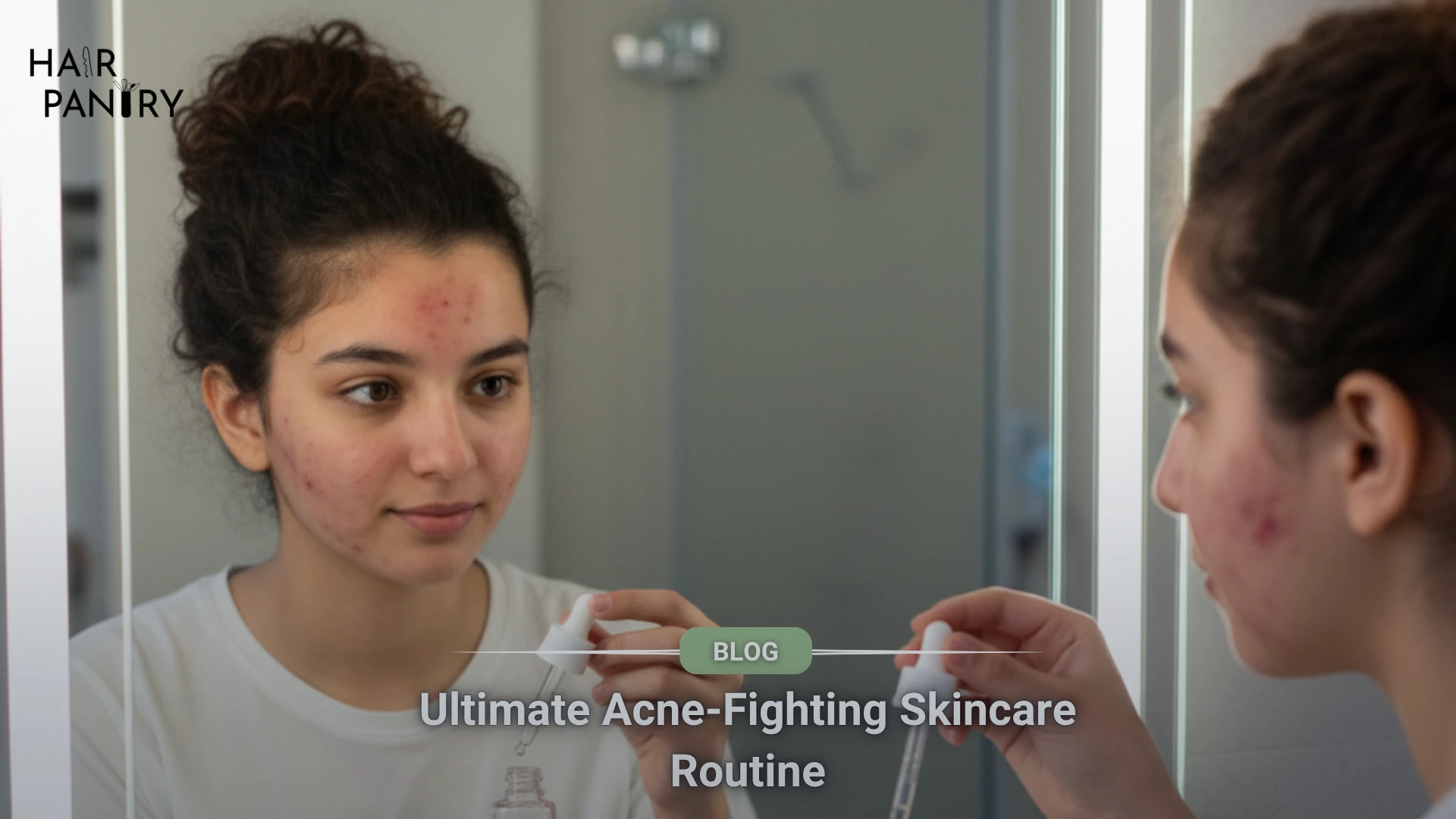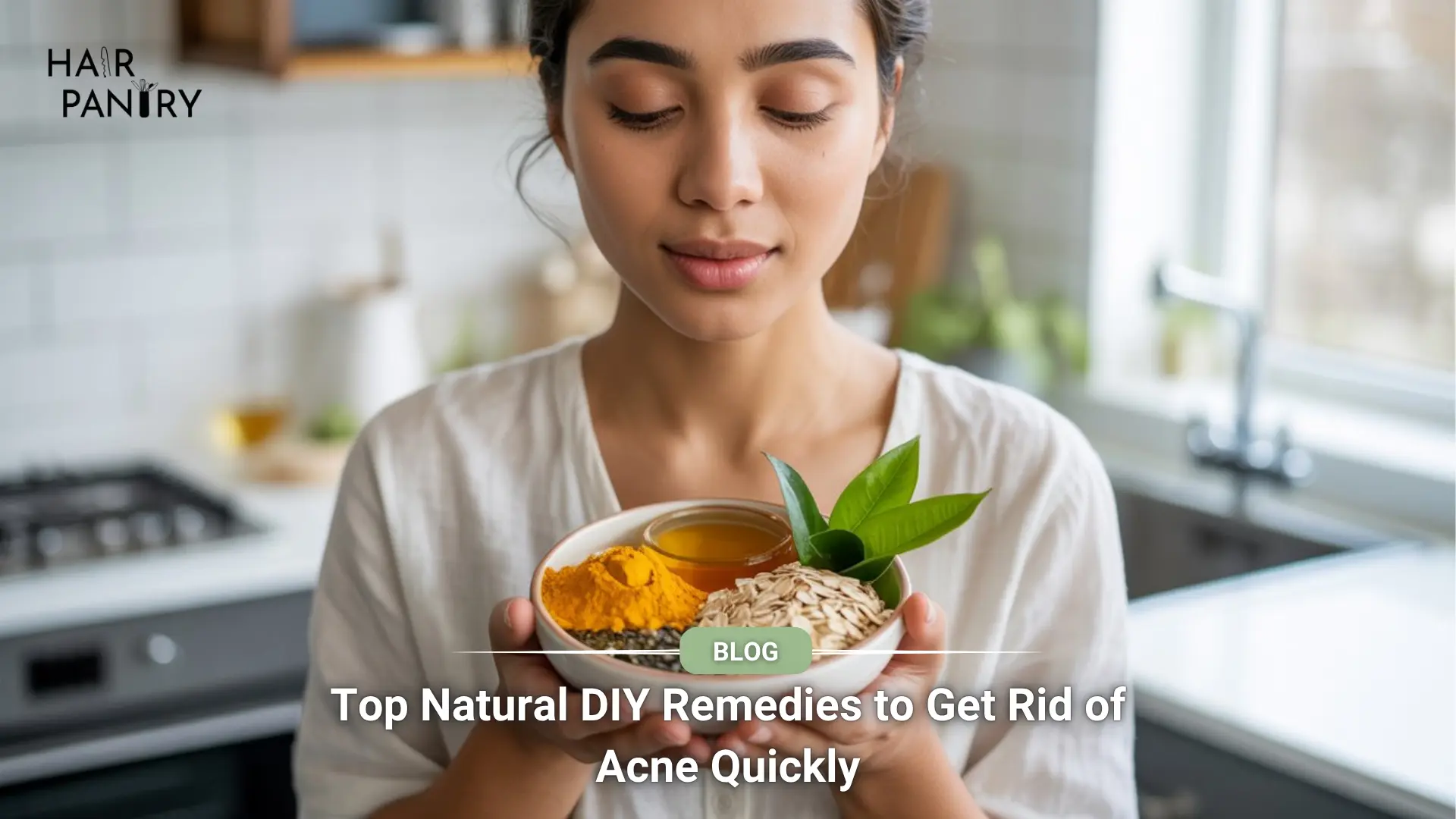Are stubborn pimples making you feel self-conscious? If you’re tired of harsh chemicals or don’t want to visit the dermatologist just yet, this guide is for you. Using natural ingredients you probably already have at home, like turmeric, honey, aloe vera, and green tea, can help reduce acne, soothe inflammation, and decrease redness. The best part? These remedies are cost-effective and easy to make.
In this article, we’ll walk you through reliable, evidence-based DIY treatments proven to calm acne quickly and naturally. Plus, we’ll share safety tips and explain when it’s best to consult a skin specialist.
1. Turmeric–Honey Mask for Calming Pimples
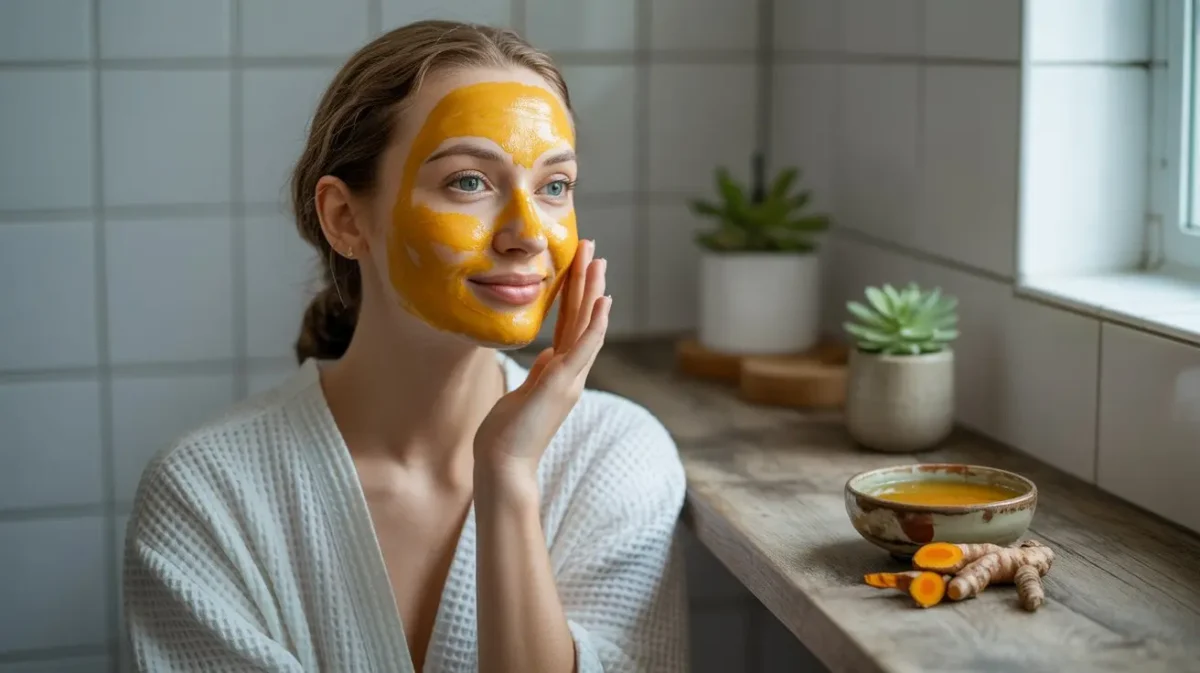
Why this works
Turmeric contains curcumin, a powerful compound with anti-inflammatory and antibacterial properties. It has been shown to inhibit acne-causing bacteria like P. acnes and reduce swelling and redness. Honey, especially raw or Manuka honey, adds moisturization, naturally draws in hydration, and supports wound healing, all while combating acne-causing microbes.
How to make it
- Mix 1 teaspoon turmeric powder with 1 tablespoon raw honey.
- Apply to clean skin and let it sit for 15–20 minutes.
- Gently rinse off with lukewarm water.
Benefits
- Reduces redness and swelling.
- Helps remove bacteria and heal pimples faster.
- Improves skin texture and brightens spots over time.
Safety Tips
- Always do a patch test (e.g., inside forearm) before applying to your face.
- Turmeric can temporarily stain skin or clothes. Use an old shirt and rinse well.
- Use this mask 2–3 times a week, rather than daily, to minimize irritation.
2. Tea Tree Oil & Aloe Vera Spot Treatment
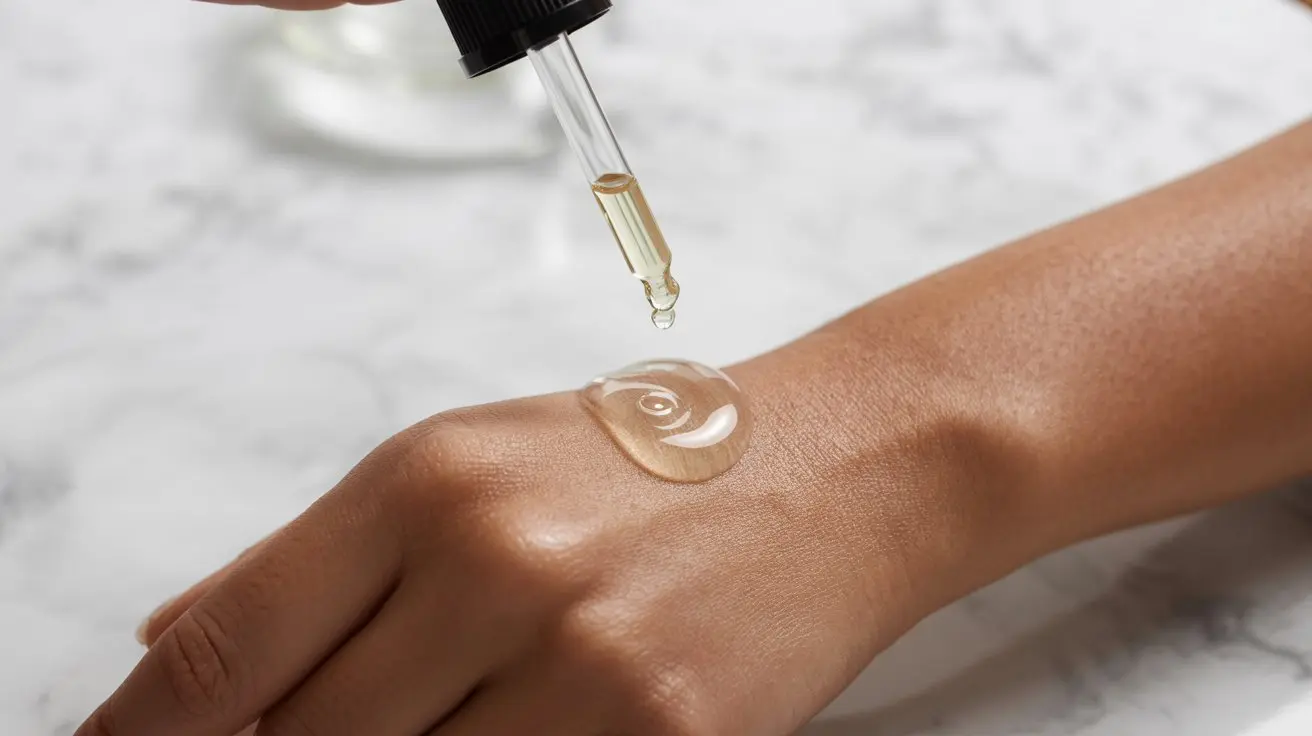
Why it helps
Tea Tree Oil is a widely recognized natural antibacterial essential oil, shown to reduce acne lesions as effectively as some over-the-counter treatments but with fewer harsh chemicals. Aloe vera gel is soothing and anti-inflammatory, and it helps calm redness and dryness, especially when paired with stronger ingredients like tea tree oil.
How to use it
- Mix 2–3 drops of tea tree oil into 1 teaspoon jojoba, coconut, or aloe vera oil.
- Use a cotton swab to apply only to acne spots, not the entire face.
- Let it sit overnight. Rinse in the morning if any residue remains.
Benefits
- Targets bacteria directly on pimples.
- Soothes redness and speeds healing.
- Lightweight and great for spot treatment.
Precautions
- Do a patch test to check for sensitivity, as pure tea tree oil can irritate skin.
- Avoid using under the age of 12. Overuse may cause allergic reactions or hormonal disruption in rare cases.
- Use up to once or twice a day, maximum.
3. Apple Cider Vinegar & Clay Mask

Why choose this
Apple cider vinegar (ACV) contains lactic and acetic acids, which help balance skin pH and reduce acne-causing bacteria. Clay masks absorb oils and impurities from pores, improving skin texture.
Recipe
- Combine 1 tablespoon ACV with 2 tablespoons bentonite clay to form a paste.
- Apply to acne-prone areas, avoiding the eyes.
- Let it sit for 10–15 minutes. Rinse with lukewarm water.
Benefits
- Gently removes blackheads and impurities.
- If your skin is oily, clay absorbs excess sebum.
- ACV helps fade post-acne stains gradually.
Tips & Warnings
- Dilute ACV properly; never use full strength.
- Use once a week maximum to prevent over-drying.
- Always rinse thoroughly. Acids can sting or irritate if left on for too long.
4. Oatmeal + Yogurt Gentle Exfoliant
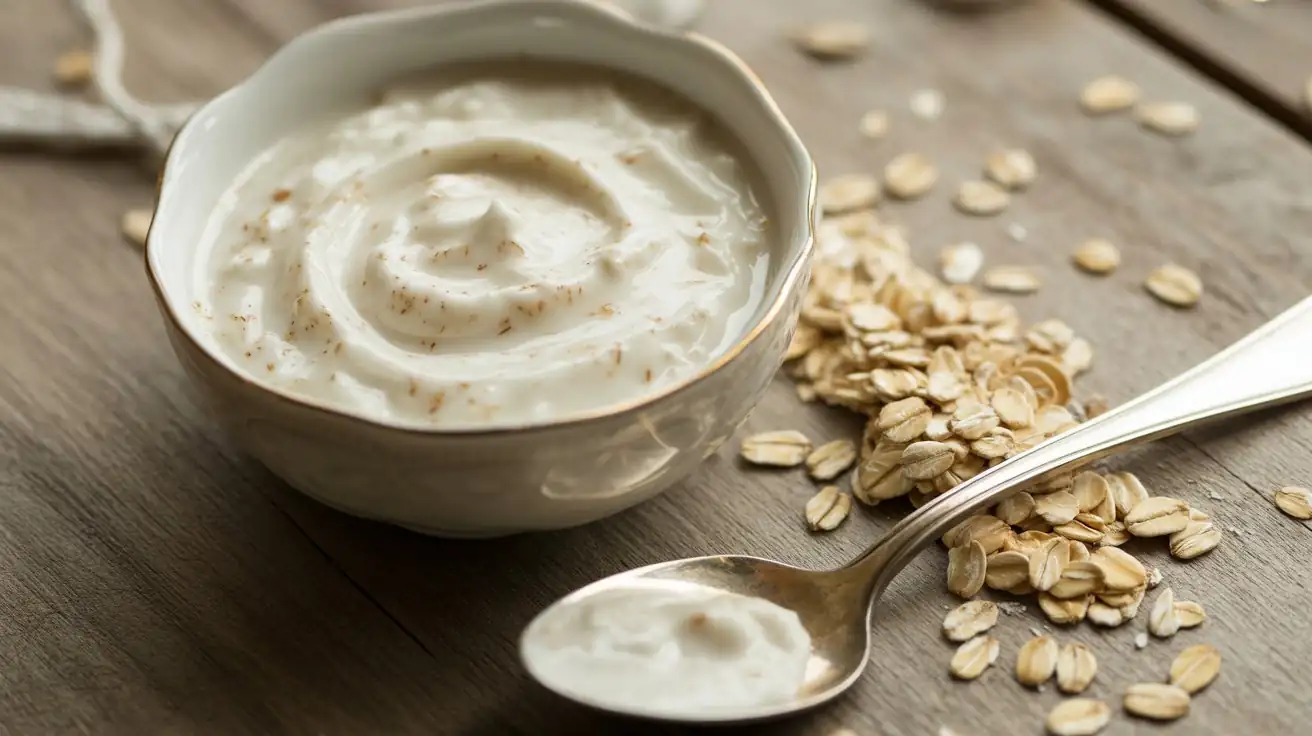
Why it’s gentle yet effective
Cooked oatmeal has anti-inflammatory benefits and helps remove dead skin cells, while yogurt contains lactic acid that exfoliates gently. Together, they soothe and cleanse without irritation.
Recipe
- Grind 1 tablespoon of plain oatmeal into a fine powder.
- Mix with 1 tablespoon plain yogurt to form a paste.
- Gently massage onto face in circular motions for about 1 minute.
- Leave it on for 20 minutes, then rinse with lukewarm water.
Benefits
- Promotes smoothness and reduces redness.
- Non-abrasive exfoliation suitable for sensitive skin.
- Hydrating and moisturizing properties help prevent dryness.
Precautions
- Use only 2–3 times per week.
- Avoid if you have very oily or acneic skin may leave residue if not rinsed well.
5. Green Tea & Spearmint Tea
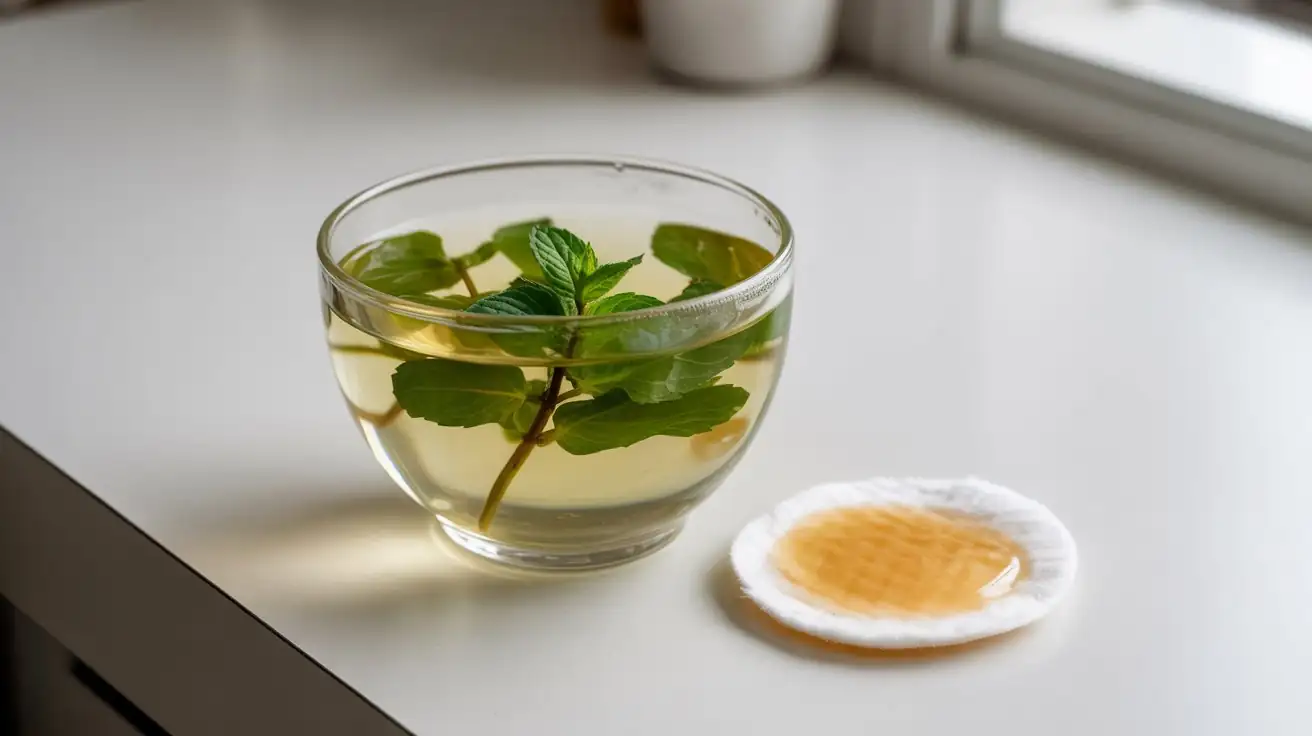
Why drink or apply herbal tea
Green tea is rich in antioxidants called EGCG, which reduce inflammation and sebum production, helping reduce acne lesions when applied topically or consumed internally. Spearmint tea may help with hormonal acne by reducing androgen levels, particularly helpful for adult women experiencing breakouts.
How to use
- Brew 1–2 cups of green or spearmint tea daily without sugar.
- Let it cool and apply to your skin using a cotton pad as a toner for 10–15 minutes before rinsing.
- Or simply drink it daily to support internal balance.
Benefits
- Hydrates while delivering antioxidants to your skin.
- Balances hormones and sebum production.
- Helps calm inflammation and prevent future breakouts.
Notes
- No sugar sweeteners can increase inflammation.
- Organic tea is preferred for purity and better results.
6. Other Natural Helpers
Here are a few additional herbs that offer acne support:
- Neem: Widely used in Ayurvedic skincare for its anti-bacterial, anti-fungal, and anti-inflammatory effects. Make a neem paste or find neem powder blended with water or rosewater. Use it as a mask for about 20–30 minutes once or twice a week.
- Chamomile or Rosewater: Applying cooled chamomile tea as a toner or using rosewater reduces redness and redness/calms irritated skin effectively.
- Honey & Cinnamon Mask: Mix 1 tbsp raw honey with ½ tsp cinnamon powder. Apply for 10–15 minutes for antibacterial benefits and skin brightening.
When to Opt for Serums?
Natural DIY remedies are a great start, but for persistent or hormonal acne, using a targeted serum can boost results. Acne Buster Serum is a dermatologist-recommended, lightweight solution that fits right into your evening skincare routine.
How it works:
- Salicylic acid (2%) exfoliates inside pores to prevent clogs and breakouts.
- Niacinamide (5%) calms inflammation, reduces excess oil, and fades post-acne spots.
- Sodium Hyaluronate hydrates without greasiness, ideal for humid weather and layering under sunscreen or makeup.
Usage instructions:
- Cleanse your face gently and pat dry.
- Shake the serum bottle to mix active ingredients.
- Apply 2–3 drops to affected areas or face, massage until absorbed.
- Use every evening; if skin feels tight or flaky, switch to every other night and follow with a light moisturizer.
- Always apply SPF the next day, since salicylic acid can increase UV sensitivity.
Safety & results:
- Always patch test behind the ear or forearm first.
- Many users notice fewer red bumps within 1 week, and clearer tone/texture in 3–4 weeks with consistent use.
Why we like it:
This serum brings a scientifically-backed, minimal chemical formula into your skincare ritual without replacing your love for natural remedies. It complements the DIY masks by targeting blocked pores and encouraging skin turnover for visible results faster.
Safety Tips & When to Talk to a Dermatologist
- Always patch test any new remedy for allergic reactions or irritation.
- Natural doesn’t always mean harmless: lemon juice or pure essential oils can cause burns or sensitivity if misused.
- Avoid popping or squeezing pimples it increases inflammation and risk of scarring.
- If your acne is severe, deep (cystic), or persistent for more than 6–8 weeks, consult a dermatologist instead of relying on home remedies alone. Natural treatments are best suited for mild or moderate acne. Also, consider a low-glycemic diet and hydration to support skin health.
Conclusion
You don’t need expensive creams or harsh chemicals to start seeing improvement in acne. With consistency, these natural DIY remedies like turmeric-and-honey masks, tea tree spot treatments, clay-and-ACV masks, oatmeal exfoliants, and herbal teas can support clearer, calmer skin. Start with just one method, try it for a week, and observe how your skin responds. Always hydrate, avoid sun after acidic treatments, and let your skin rest between layers of care.
FAQ
Can turmeric stain my skin or clothes?
Ye,s it leaves ya a ellow tint. Always patch test and rinse thoroughly. Use old clothing after application.
How to dilute tea tree oil?
Recommended: 2–3 drops in 1 teaspoon of carrier oil. Never apply pure essential oil directly.
How often should I use ACV toner or a clay mask?
Once a week, maximum. Use only diluted solution (1 part vinegar to 3 parts water) to avoid dryness or irritation.
How long to see improvement?
Mild acne may improve in 1–2 weeks; more stubborn acne may take 4–6 weeks with consistent use and skincare support.
